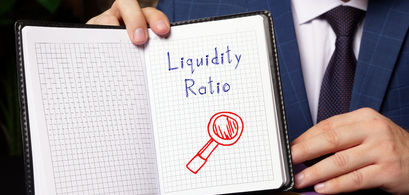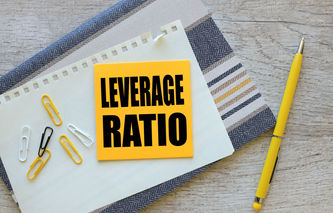The ability of a company to pay off its debt obligations is measured by liquidity ratios. These are important indicators of a company's health, because the inability to pay back creditors can result in a company seeking protection under bankruptcy law, or even forcing companies to cease operating.
In this article, we're going to review the three key liquidity ratios. That review will include a four step explanation of each measure. We'll start with a broad definition, including how to interpret results. Next, we'll provide the calculation of each metric. Finally, we'll review the pros and cons of each ratio.
Key Liquidity Ratios
The three key liquidity ratios we're going to review include the current, quick, and the cash ratio. Each of these measures has the same basic structure, whereby assets are place in the numerator and liabilities in the denominator. The word "liquidity" is used to describe how easily an asset can be converted into cash. As a rule of thumb, the value of these liquid assets should be twice as high as the company's short term debt obligations.
Current Ratio
The current ratio is a very simple measure of liquidity. Only two balance sheet line items are required in this calculation: current assets and current liabilities. By definition, current assets can be converted into cash in less than 12 months. Current liabilities are the debt of the company that must be settled in cash over the next 12 months. Therefore, the current ratio measures a company's ability to pay its debt coming due in the next 12 months using assets that can be converted to cash in that same timeframe.
Formula
Current Ratio = Current Assets / Current Liabilities
Where:
Current Assets = Cash + Marketable Securities + Accounts Receivable + Inventory + Prepaid Expenses
Current Liabilities = Accounts Payable + Income Taxes Payable + Current Portion of Long Term Debt
Interpretation
Generally, a current ratio of 2.0 or higher is considered acceptable; meaning the company appears to have the financial resources to meet its short term debt obligations. A ratio below 1.0 is considered problematic, since the business has more debt coming due in the next 12 months than assets that can be converted into cash. Relative strength can be determined by comparing this ratio to an industry benchmark.
While relatively high current ratios are not problematic to creditors, they may indicate the inefficient use of current assets.
Quick Ratio or Acid Test
If a company is struggling financially, it may also have difficulty selling its inventory. The quick ratio refines the current ratio by removing inventory and prepaid expenses from current assets. It's considered the "acid test" of a company's ability to convert assets into cash to pay its debt obligations over the next 12 months.
Formula
Quick Ratio = Quick Assets / Current Liabilities
Where:
Quick Assets = Cash + Marketable Securities + Accounts Receivable
Current Liabilities = Accounts Payable + Income Taxes Payable + Current Portion of Long Term Debt
Interpretation
Since inventory and prepaid expenses are removed from current assets, the quick ratio does not have to be as high as the current ratio. Generally, a quick ratio of 1.0 or higher is considered acceptable. As is the case with the current ratio, a quick ratio that is less than 1.0 is problematic, while a high ratio may indicate the inefficient use of current assets. That is to say, the company has too much cash on hand, which could be used to produce additional profits. Once again, the best measure of relative strength is against an industry benchmark.
Cash Ratio
Of the three liquidity ratios that utilize the balance sheet, the cash ratio is the most restrictive. In addition to removing inventories and prepaid expenses, the cash ratio also removes accounts receivable from current assets. In doing so, this measure only considers current assets that are in complete control of the company. By definition, marketable securities can be quickly turned into cash. As this measure approaches 1.0, the company no longer has to worry about collecting money in accounts receivable to meet its short term debt obligations.
Formula
Cash Ratio = (Cash + Marketable Securities) / Current Liabilities
Where:
Current Liabilities = Accounts Payable + Income Taxes Payable + Current Portion of Long Term Debt
Interpretation
While some sources will state a good cash ratio is 0.5 or greater, others state the value should be closer to 1.0. It's very likely that financially sound companies will have a cash ratio somewhere in between these two values. For example, both General Electric and Apple Computer had cash ratios greater than 0.6 as of December 2013.
Pros and Cons of Liquidity Ratios
Analyst can use liquidity ratios to quickly screen a large number of companies for potential problems. They help creditors to gain a better understanding if a company can meet its short term obligations, and the risk they present when applying for additional credit. Comparing ratios within industries permits the analyst to understand a company's strength relative to competitors. Unfortunately, these ratios have their limits too.
Liquidity ratios are calculated using information appearing on the balance sheet. As such, they are a snapshot in time, and may not reflect the financial position of the company going forward. They can also be a result of creative accounting practices. A good analyst will not only look at the ratios themselves, but they will closely examine each line item appearing in the current assets and current liabilities section of the balance sheet.




